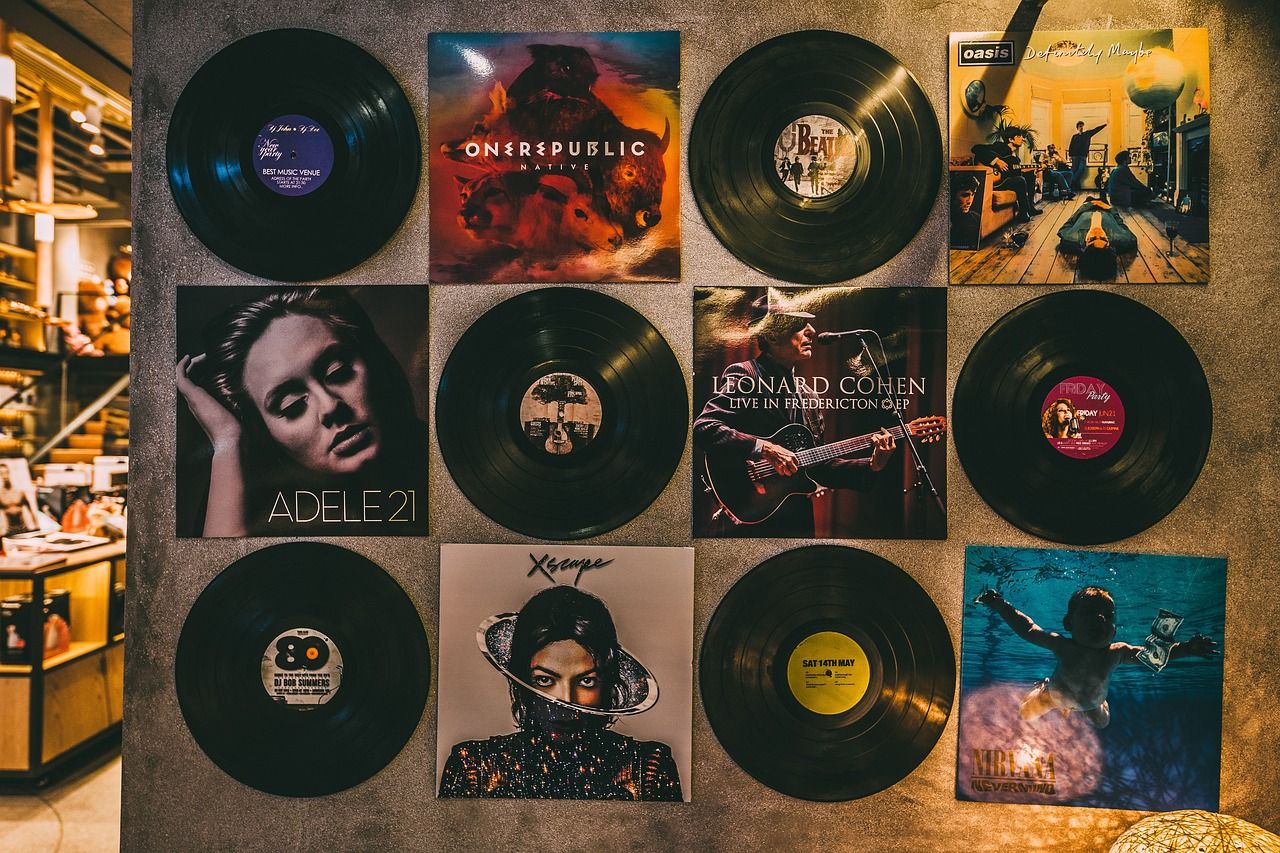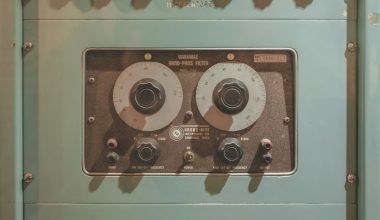In the ever-evolving music industry, artists have various formats to choose from when releasing their work. Two popular formats are the EP (Extended Play) and the album. Understanding the difference between EP and album is crucial for both artists and fans. This comprehensive guide will explore what an EP and an album are, their differences, and how to decide which one to release.
What is an EP?
An EP stands for Extended Play, is a music recording that contains more tracks than a single but is too short to qualify as a full album. Typically, an EP has three to five songs and lasts around 15 to 30 minutes. The EP format is often used by new artists to introduce themselves or by established artists to release new music between albums.
Key Characteristics of an EP
- Length: An EP usually lasts between 15 to 30 minutes.
- Number of Tracks: An EP typically contains 3 to 5 songs.
- Purpose: EPs are often used to showcase new music, experiment with different styles, or keep fans engaged between album releases.
- Cost: Producing an EP is generally less expensive than a full album, making it a cost-effective way for artists to release music.
According to the Apple Music Style Guide, an album must be identified as an EP if it meets the following criteria:
- One to three songs with at least one song being 10 minutes long and a total running time of 30 minutes or less.
- Four to six songs with a total running time of 30 minutes or less.
Additionally, “- EP” must appear at the end of the title. If “- EP” is not included in the title, it will be added automatically.
What is an Album?
An album is a collection of music tracks released together as a single body of work. Albums usually contain a larger number of tracks than EPs and have a longer duration. An album can range from 30 minutes to over an hour, and it typically features around 10 to 15 songs.
Key Characteristics of an Album
- Length: Albums typically last from 30 minutes to over an hour.
- Number of Tracks: Albums usually contain 10 to 15 songs, but some may have more.
- Purpose: Albums are comprehensive bodies of work that often explore a specific theme or concept. They are used to establish an artist’s presence and showcase their musical range.
- Cost: Producing an album is more expensive due to the larger number of tracks and the more extended production process.
The Difference Between EP and Album
Understanding the difference between EP and album is essential for artists planning their releases and for fans who follow their favorite musicians. The primary differences lie in the length, number of tracks, purpose, and cost of production.
Length
- EP: 15 to 30 minutes
- Album: 30 minutes to over an hour
Number of Tracks
- EP: 3 to 5 songs
- Album: 10 to 15 songs (or more)
Purpose
- EP: Used to introduce new music, experiment with different styles, or keep fans engaged between album releases.
- Album: A comprehensive body of work that often explores a specific theme or concept, used to establish an artist’s presence and showcase their musical range.
Cost
- EP: Generally less expensive to produce due to fewer tracks.
- Album: More expensive to produce due to a larger number of tracks and a more extended production process.
Deciding Between an EP and an Album
Choosing between releasing an EP or an album depends on several factors, including the artist’s goals, budget, and the message they want to convey through their music.
When to Release an EP
- Introduction to the Music Scene: For new artists, releasing an EP can be an excellent way to introduce themselves without the commitment of a full album.
- Experimentation: Artists looking to experiment with new sounds or styles can use an EP to test their ideas.
- Interim Releases: Established artists can release EPs between albums to keep their audience engaged and maintain their presence in the music scene.
- Budget Constraints: EPs are more cost-effective, making them a practical choice for artists with limited budgets.
When to Release an Album
- Comprehensive Artistic Statement: Albums allow artists to explore a theme or concept in-depth, providing a comprehensive artistic statement.
- Establishing Presence: Releasing an album can help artists establish a more substantial presence in the music industry.
- Fan Engagement: Albums offer more content for fans to enjoy, helping to build a stronger connection with the audience.
- Commercial Success: Albums have the potential for greater commercial success due to the larger number of tracks and the more extended engagement they provide.
Marketing and Distribution Differences
The marketing and distribution strategies for EPs and albums also differ. Understanding these differences can help artists plan their releases more effectively.
Marketing an EP
- Targeted Campaigns: EPs can be marketed with targeted campaigns focusing on the specific songs and themes within the EP.
- Shorter Promotional Period: The promotional period for an EP is usually shorter, aligning with the quicker production and release timeline.
- Digital Platforms: EPs are often released on digital platforms, taking advantage of streaming services and online music stores.
Marketing an Album
- Comprehensive Campaigns: Albums require more extensive marketing campaigns that highlight the overall theme and the individual tracks.
- Longer Promotional Period: The promotional period for an album is longer, often starting months before the release date and continuing after the release.
- Physical and Digital Formats: Albums are typically released in both physical and digital formats, providing fans with multiple ways to purchase and enjoy the music.
Historical Perspective on EPs and Albums
The terms EP and album have historical significance in the music industry. Understanding their evolution can provide insight into their current roles.
Evolution of the EP
- 1950s and 1960s: EPs were often used to release singles with a few additional tracks. They were popular in genres like rock and roll and jazz.
- 1970s and 1980s: Punk and new wave bands frequently used EPs to release new music quickly and affordably.
- 1990s to Present: EPs have become a staple in the indie and electronic music scenes, allowing artists to release music frequently without the constraints of a full album.
Evolution of the Album
- 1950s: The concept of the album as a cohesive body of work began to take shape, with artists like Frank Sinatra and Elvis Presley releasing albums that told a story or explored a theme.
- 1960s and 1970s: The album became the primary format for releasing music, with iconic albums from The Beatles, Pink Floyd, and Led Zeppelin shaping the music landscape.
- 1980s to Present: The album remains a vital format, with digital distribution allowing for new ways to experience and consume albums.
Case Studies: EP vs. Album
Examining specific case studies can illustrate the practical applications and outcomes of choosing between an EP and an album.
Case Study 1: New Artist Introduction
- Artist: Jane Doe, a new indie artist
- Choice: EP
- Outcome: Jane releases a 4-song EP to introduce her sound and build an initial fan base. The EP’s success leads to increased streaming numbers and sets the stage for a future album release.
Case Study 2: Established Artist Experimentation
- Artist: The Rocking Band, an established rock group
- Choice: EP
- Outcome: The band releases an EP to experiment with a new electronic sound. The EP receives positive feedback, helping the band decide to incorporate the new style into their next album.
Case Study 3: Comprehensive Artistic Statement
- Artist: Melody Maker, a singer-songwriter
- Choice: Album
- Outcome: Melody releases a concept album that tells a story through 12 interconnected songs. The album receives critical acclaim and solidifies her position in the music industry.
Tips for Artists
Here are some practical tips for artists deciding between an EP and an album:
- Assess Your Goals: Determine what you want to achieve with your release. If you’re looking to introduce new music quickly or experiment with styles, an EP may be the best choice. If you’re aiming for a comprehensive artistic statement, consider an album.
- Consider Your Budget: Evaluate your financial resources. EPs are generally less expensive to produce, making them a practical choice for artists with limited budgets.
- Plan Your Marketing Strategy: Develop a marketing plan that aligns with your release format. EPs require shorter, targeted campaigns, while albums benefit from comprehensive, long-term strategies.
- Engage with Your Audience: Use social media and digital platforms to connect with your audience and promote your release. Engaging with fans can increase visibility and drive sales and streams.
- Evaluate Your Production Timeline: Consider the time required to produce and release your music. EPs can be produced more quickly, allowing for more frequent releases, while albums may require a more extended production period.
Conclusion
Understanding the difference between EP and album is essential for making informed decisions about music releases. Whether you’re a new artist looking to make your mark or an established musician experimenting with new sounds, choosing the right format can significantly impact your career. By considering factors like length, number of tracks, purpose, cost, and industry standards, you can decide whether an EP or an album best aligns with your goals.
Remember, the difference between an EP and an album is more than just the number of songs or the duration. It’s about the message you want to convey, the story you want to tell, and how you want to connect with your audience. Choosing the appropriate format helps ensure your music reaches the right listeners and creates the desired impact.
Additional Considerations for EPs and Albums
When deciding between an EP and an album, there are additional considerations that can influence your decision. These include release strategy, audience engagement, and long-term planning.
Release Strategy
- Single Releases Leading to an EP: Some artists choose to release singles leading up to the release of an EP. This strategy helps build anticipation and keeps the audience engaged with regular content.
- Album as a Milestone: For many artists, releasing an album is a significant milestone. It marks a comprehensive period of creativity and development, often culminating in a body of work that defines a phase of their career.
Audience Engagement
- Fan Feedback: Engaging with fans and considering their feedback can be valuable. If your audience is eager for more content, an EP can quickly provide new material. If they are looking for a deeper dive into your music, an album may be more appropriate.
- Touring and Performances: The format you choose can also impact your live performances. An album provides more material for concerts and tours, while an EP allows for shorter, more focused performances.
Long-Term Planning
- Career Development: Think about where you are in your career and where you want to go. Early in your career, EPs can help build your presence. As you grow, albums can solidify your reputation and showcase your artistic development.
- Catalog Building: Over time, building a catalog of both EPs and albums can provide a diverse and rich portfolio of your work. This variety can attract different segments of listeners and keep your music fresh and engaging.
Examples of Successful EPs and Albums
Understanding the success stories behind famous EPs and albums can provide inspiration and guidance for your releases. Here are a few notable examples:
Successful EPs
- “My Dear Melancholy,” by The Weeknd: This EP received critical acclaim and commercial success, showcasing a darker, more introspective side of The Weeknd’s music.
- “Love Yourself: Her” by BTS: This EP from the globally popular K-pop group BTS played a significant role in their rise to international fame.
- “Made in Heaven” by Queen: Although more of a mini-album, this release was significant for featuring previously unheard tracks by the legendary band.
Successful Albums
- “Thriller” by Michael Jackson: Often considered one of the greatest albums of all time, “Thriller” set new standards for production, video, and performance.
- “The Dark Side of the Moon” by Pink Floyd: This concept album is renowned for its cohesive theme, innovative production, and lasting impact on music.
- “Lemonade” by Beyoncé: An example of a modern concept album, “Lemonade” received praise for its narrative, visuals, and powerful themes.
The Role of EPs and Albums in the Digital Age
With the rise of digital distribution and streaming platforms, the roles of EPs and albums have evolved. Understanding these changes can help artists navigate the modern music landscape effectively.
Streaming Platforms
- Discoverability: EPs can be a great way to increase discoverability on streaming platforms. Shorter releases mean listeners can quickly get a sense of your music, potentially leading them to explore more of your work.
- Playlist Inclusion: Songs from EPs and albums can be included in playlists, which are a key way for new listeners to discover your music. Regular releases can keep your music fresh in the minds of playlist curators.
Digital Sales
- Bundles and Offers: Digital platforms allow for creative sales strategies, such as bundling EPs with albums or offering special editions with bonus tracks.
- Analytics and Feedback: Digital distribution provides detailed analytics, helping you understand listener behavior and refine your future releases based on real-time feedback.
Navigating Industry Standards
Different platforms and record labels may have specific standards for what constitutes an EP versus an album. Familiarizing yourself with these standards can ensure your releases meet industry expectations.
Apple Music Style Guide
According to the Apple Music Style Guide, an album must be identified as an EP if it meets the following criteria:
- One to three songs with at least one song being 10 minutes long and a total running time of 30 minutes or less.
- Four to six songs with a total running time of 30 minutes or less.
- “- EP” must appear at the end of the title. If “- EP” is not included in the title, it will be added automatically.
Other Platform Guidelines
Different platforms like Spotify, Amazon Music, and YouTube Music may have their own guidelines. It’s essential to review these guidelines to ensure your music is categorized correctly and reaches your audience effectively.
Final Thoughts on EPs and Albums
Understanding the difference between EP and album is crucial for making informed decisions about your music releases. By considering the length, number of tracks, purpose, cost, and industry standards, you can choose the format that best suits your artistic and career goals. Whether you decide to release an EP or an album, both formats offer unique opportunities to connect with your audience and showcase your musical talent.
Remember to leverage digital platforms, engage with your audience, and plan your marketing strategy carefully. With thoughtful planning and execution, your EPs and albums can help you build a successful and enduring music career.
By understanding the difference between EP and album, artists can make strategic decisions about their music releases, ensuring they reach the right audience and achieve their artistic goals. Whether you’re a new artist or an established musician, knowing the ins and outs of EPs and albums will help you navigate the music industry more effectively.
For further reading, explore these related articles:
- What is Apple Music Style Guide?
- Understanding Why Song Audio Gets Rejected from Streaming Platforms
- What is an UPC and ISRC Code?
- Benefits of Midweek Music Release
For additional resources on music marketing and distribution, visit Deliver My Tune.






